Gongju travel - South Korea, Asia
Gongju is a city located in South Chungcheong Province, South Korea, approximately 120 kilometers south of Seoul. Situated along the Geum River and is known for its rich historical and cultural heritage. Visitors can explore numerous archaeological sites and cultural relics from this period, including the UNESCO World Heritage-listed Baekje Historic Areas. The city is also known for its beautiful natural surroundings, including scenic mountains and rivers, making it an attractive destination for history enthusiasts and nature lovers alike. Additionally, Gongju hosts various cultural events and festivals that celebrate its rich heritage, further enhancing its appeal to visitors.
Craving an exceptional South Korea adventure? Explore our handpicked premium tours here for the ultimate experience.
Population: Approximately 105.000 people.
Economy: The local economy is primarily driven by agriculture, with the surrounding fertile land supporting the cultivation of various crops, including rice, fruits, and vegetables. Additionally, Gongju has developed a burgeoning tourism sector, capitalizing on its historical sites, such as the Baekje Historic Areas, which attract both domestic and international visitors.
Attractions: Gongsanseong Fortress, Songsan-ri Tombs, Gongju National Museum, Magoksa Temple, Gyeryongsan Mountain, Geumgang River
South Korea
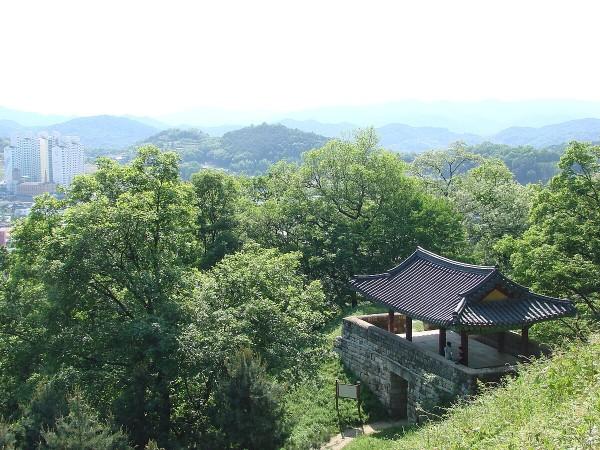
Overview of Gongju
History & Cultural Influence
Gongju, the former capital of the Baekje Kingdom from 475 to 538 AD. This period marked a flourishing of art, architecture, and cultural development, with Gongju serving as a political and cultural center. The city's historical significance is underscored by its designation as a UNESCO World Heritage site, which includes key attractions such as the Gongsanseong Fortress, the Songsan-ri Tombs, and the Gongju National Museum, where artifacts from the Baekje period are preserved and displayed.
The discovery of the royal tomb of King Muryeong in 1971, which contained numerous treasures, further solidified Gongju's importance in Korean history. This rich cultural heritage shapes the city's character, making it a hub for historical reenactments, such as the Baekje Cultural Festival, which celebrates the legacy of the Baekje Kingdom through parades and performances.
Interaction with The Locals
Visitors to Gongju can expect warm and friendly interactions with the locals, who are known for their hospitality and pride in their cultural heritage. The city's population is predominantly ethnic Korean, reflecting the homogeneity typical of South Korea. Residents generally exhibit a welcoming attitude towards tourists, often eager to share their knowledge of Gongju's rich history and cultural sites, such as the Baekje Historic Areas and Gongsanseong Fortress.
While English may not be widely spoken, many locals are willing to assist visitors, and those who do speak English often enjoy engaging in conversations about their city and its historical significance. Travelers may also encounter traditional customs and practices, especially during local festivals, which further enrich the experience of exploring Gongju.
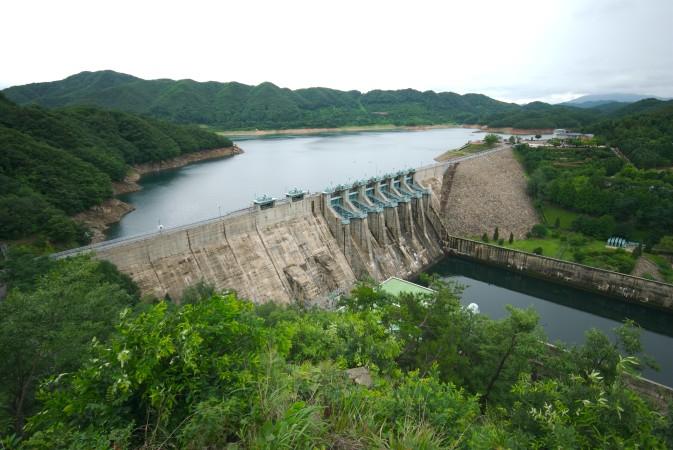
Geum River - © Yoo Chul Chung
Top attractions in Gongju
Gongju, a city rich in history and cultural heritage, offers visitors a glimpse into the ancient Baekje Kingdom through its well-preserved landmarks and scenic beauty. From UNESCO World Heritage sites to serene natural landscapes, Gongju's top attractions provide a captivating journey into Korea's past and present.
Gongsanseong Fortress
Location: 280 Ungjin-ro, Gongju-si, Chungcheongnam-do
This UNESCO World Heritage site was the royal palace of the Baekje Kingdom, featuring impressive fortress walls and offering stunning views of the Geumgang River and Gongju city. The fortress includes various gates, pavilions, and defensive structures, and visitors can walk along its walls, which provide panoramic views of the surrounding landscape. It is also a popular spot during the annual Baekje Cultural Festival.
Songsan-ri Tombs and Royal Tomb of King Muryeong
Location: 37-2 Wangreung-ro, Gongju-si, Chungcheongnam-do
The royal tombs of the Baekje Kingdom, including the well-preserved tomb of King Muryeong, which contained over 4,600 artifacts when excavated in 1971. The tombs are a significant archaeological site, offering insights into Baekje’s royal burial practices. The site also includes a museum where replicas of the tombs and the original artifacts are displayed, providing a deeper understanding of Baekje’s history.
Gongju National Museum
Location: 34 Gwangwangdanji-gil, Gongju-si, Chungcheongnam-do
This free museum showcases the history and culture of the Baekje Kingdom, with exhibits featuring artifacts from the royal tombs and interactive displays. It houses the treasures found in King Muryeong’s tomb, including gold crowns, jewelry, and ceremonial items. The museum also offers educational programs and guided tours, making it a must-visit for history enthusiasts.
Magoksa Temple
Location: 966 Magoksa-ro, Sagok-myeon, Gongju, Chungcheongnam-do
A historic Buddhist temple built during the Baekje period, known for its serene surroundings and the Fresh Verdure Festival held every spring. The temple is part of the Jogye Order of Korean Buddhism and features several cultural assets, including a five-story stone pagoda. The temple’s peaceful setting along the Taegeukcheon Stream makes it a popular destination for meditation and temple stays.
Gyeryongsan Mountain
Location: Gyeryong-myeon, Gongju-si, Chungcheongnam-do
One of the most famous and sacred mountains in Korea, with a shape reminiscent of a dragon with a rooster comb. It offers various hiking trails and scenic views, attracting hikers and pilgrims alike. The mountain is home to several important temples, including Donghaksa and Gapsa, and is also known for its vibrant fall foliage and spring blossoms.
Geumgang River
Location: Flowing through Gongju
A beautiful river that was the site of the largest ferry dock during the Baekje period. It offers stunning views, especially from Gongsanseong Fortress. The river is also a popular spot for leisurely boat rides and has several walking paths along its banks, providing an ideal setting for enjoying the natural beauty of the area.

Gongsanseong Fortress - © gather
Must-Try Dishes in Gongju
When visiting Gongju, don't miss the chance to try Samgyetang, a nourishing ginseng chicken soup perfect for boosting stamina, especially during summer. Gongju chestnuts, known for their sweetness, are a regional specialty, featured in everything from savory dishes to desserts. For a truly local experience, sample Gongju Makgeolli, a smooth rice wine made with the area's famous chestnuts, offering a unique twist on the traditional Korean beverage.
Samgyetang (Ginseng Chicken Soup)
This hearty soup features a whole young chicken stuffed with glutinous rice, ginseng, jujubes, and garlic, slowly simmered to create a nourishing broth. Especially popular during summer, Samgyetang is believed to restore stamina and boost health, showcasing the region’s prized ingredient—ginseng.
Gongju Chestnuts
Renowned for their sweetness and rich texture, Gongju chestnuts are harvested in the fall and used in a variety of dishes, snacks, and desserts. With over 2,000 years of history, these chestnuts play a significant role in local agriculture, contributing 17% of Korea's total chestnut production and shining in regional cuisine.
Gongju Makgeolli (Rice Wine)
This local specialty is a traditional rice wine made with Gongju's famous chestnuts, giving it a smooth, nutty flavor. With less carbonation than regular makgeolli, it pairs wonderfully with local dishes, offering visitors a refreshing, unique taste of the region.
Yukhoebibimbap
A vibrant take on bibimbap, this dish features raw beef tartare (yukhoe) served over rice, topped with fresh vegetables and crunchy raw chestnuts. It’s a local favorite in Gongju, highlighting the region's creativity in incorporating chestnuts into traditional Korean fare.
Are you interested in exploring the beauty of Danyang? Uncover the secrets of this fascinating destination in our detailed article here.
Gongju Mandu (Dumplings)
Gongju’s version of Korea's beloved mandu is filled with a delicious mixture of meat and fresh vegetables. Whether steamed or fried, these dumplings offer a comforting and flavorful bite that showcases the region’s focus on fresh, local ingredients.
Gongju Jokbal (Pig's Feet)
Tender, braised pig’s feet, seasoned with soy sauce, garlic, and spices, make Gongju Jokbal a must-try dish. Known for its rich, savory flavor, this delicacy is often enjoyed with dipping sauces and is a popular choice for late-night snacks or pairing with a glass of makgeolli..
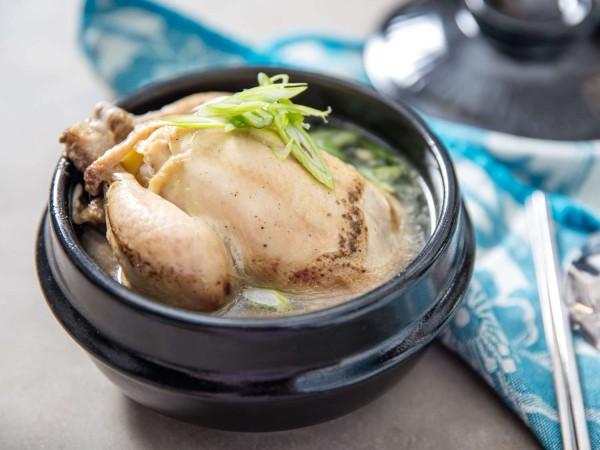
Samgyetang - © gather
Weather in Gongju: Best Time to Visit
Gongju experiences a humid continental climate, characterized by distinct seasonal variations that influence the best times for travel.
Average Temperatures
- Winter (December to February): The coldest month is January, with average highs around 2°C (35°F) and lows of -7°C (20°F).
- Spring (March to May): Temperatures gradually warm up, with March averaging highs of 11°C (51°F) and lows of 0°C (32°F), reaching about 21°C (70°F) by May.
- Summer (June to August): The hottest month is August, with average highs around 30°C (86°F) and lows of 22°C (72°F). This period is also marked by high humidity and significant rainfall.
- Autumn (September to November): Temperatures begin to cool, with September averaging highs of 24°C (75°F) and lows of 14°C (57°F), dropping to around 11°C (52°F) in November.
Rainfall
Annual Average Precipitation: Approximately 1,251 mm (49.2 inches), with the majority falling during the summer months, particularly in July and August.
Best Time to Travel
Optimal Seasons: Late spring (late May to early July) and early autumn (mid-September to October) are considered the best times to visit Gongju. During these periods, the weather is generally mild and pleasant, ideal for outdoor activities and exploring historical sites.
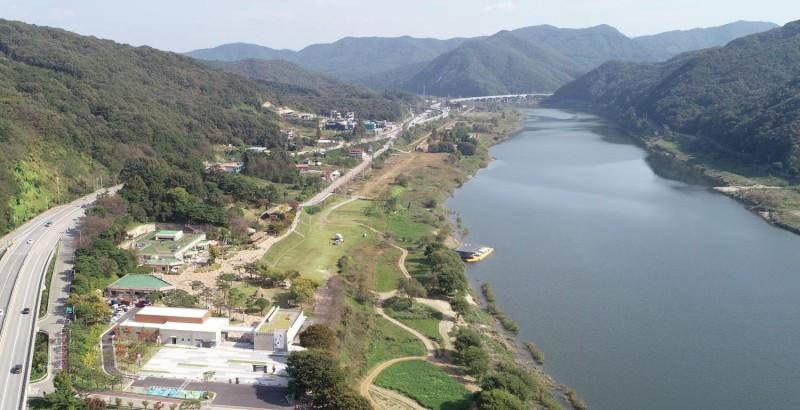
Seokjangni Museum - © gather
Festivals & Local Celebrations
Gongju hosts several vibrant festivals and local celebrations that showcase its rich cultural heritage and community spirit. Here are some major events visitors can expect:
Baekje Cultural Festival
Time of Year: Early October
An annual festival celebrates the history and culture of the Baekje Kingdom, featuring historical reenactments, parades, traditional music performances, and exhibitions. Held in the Baekje Historic Areas, a UNESCO World Heritage site, it offers visitors a chance to immerse themselves in the region's ancient traditions.
Gongju Roasted Chestnut Festival
Time of Year: Late January (January 26th – 28th, 2024)
Celebrating Gongju's reputation as a major chestnut producer, this festival allows visitors to roast chestnuts over open fires, sample various chestnut-based foods, and purchase local chestnuts at discounted prices. It's a family-friendly event that highlights the region's agricultural heritage.
Geumgang Nature Art Biennale
Time of Year: Every two years (next in 2025)
This unique outdoor art festival features installations created by artists from around the world, focusing on the relationship between nature and art. Visitors can explore the artworks at Yeonmisan Nature Art Park and engage with the artists, making it a dynamic cultural experience.
Fresh Verdure Festival
Time of Year: Spring (typically in April)
Held at Magoksa Temple, this festival celebrates the lush greenery of the area with various events, including temple stays, cultural performances, and guided nature walks. It emphasizes the beauty of nature and the spiritual heritage of the temple.
Gyeryongsan Cherry Blossom Festival
Time of Year: April
Takes place around Donghaksa Temple and features stunning cherry blossoms in full bloom. Visitors can enjoy scenic views, participate in cultural activities, and take part in traditional performances amidst the beautiful floral backdrop.
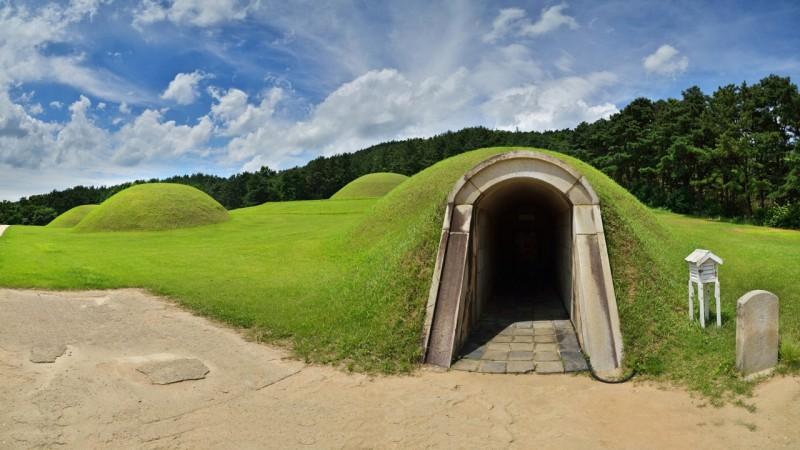
Royal Tomb of King Muryeong - © gather
Culture Etiquette in Gongju
Respect for Elders
In Korean culture, age holds great significance, and showing respect to elders is essential. Always greet older individuals first and offer your seat to them on public transportation. When speaking to someone older, use formal language and respectful titles.
Greetings
Bowing is the customary way to greet in Korea. A slight bow works for casual meetings, while a deeper bow shows greater respect. In business settings, handshakes may also be used but should always be accompanied by a respectful bow.
Dining Etiquette
At meals, it's polite to wait for the eldest person to start eating before you begin. Show appreciation by saying "잘 먹겠습니다" (I will eat well) before the meal and "잘 먹었습니다" (I ate well) afterward. When passing food or drinks, use both hands, and avoid sticking chopsticks upright in a bowl of rice, as it resembles a funeral ritual.
Gift-Giving
When invited to someone’s home, it's thoughtful to bring a small gift like fruit or sweets. Present the gift with both hands, and it’s considered polite not to open it immediately in front of the host.
Are you interested in exploring the beauty of Suwon? Uncover the secrets of this fascinating destination in our detailed article here.
Removing Shoes
Upon entering a Korean home, it’s customary to remove your shoes, with many homes offering slippers for guests to wear inside.
Public Behavior
Modesty and restraint are highly valued in public spaces. Keep conversations quiet, avoid public displays of affection, and dress conservatively, particularly in traditional areas.
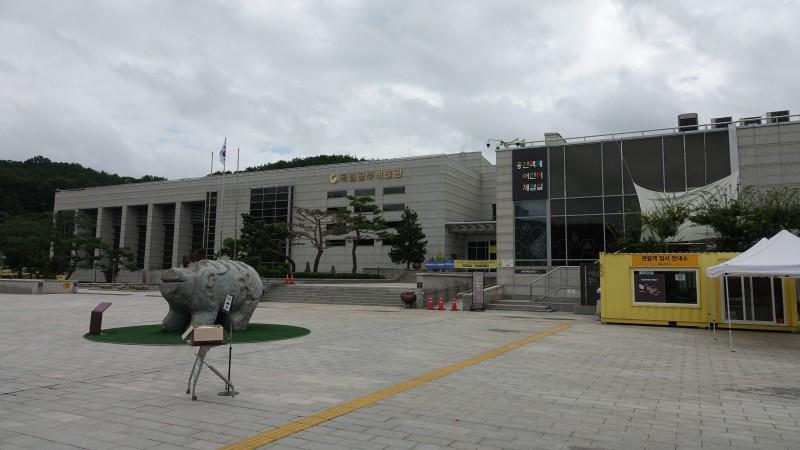
Gongju National Museum artifacts - © Seohae1999
Essential Travel Information
Getting to Gongju
Airport Transfers
Cheongju International Airport
Location: Cheongju International Airport is the nearest major airport to Gongju, approximately 100 km away.
Transportation Options
- Airport Limousines: Direct limousine buses connect Cheongju International Airport to Gongju. These comfortable buses typically take 1.5 to 2 hours to reach the city.
- Taxis: Taxis are available at the airport for direct transfers to Gongju. Though more expensive, they provide convenience, especially when traveling with luggage.
Public Transit
Buses
- Intercity Buses: Gongju’s intercity bus system connects to major cities like Seoul and Daejeon. The Gongju Bus Terminal offers routes to nearby regions, making travel convenient.
- Local Buses: Within Gongju, frequent local buses make navigating the city and reaching popular attractions easy.
Trains
- KTX and SRT: The nearest KTX station is in Daejeon, about 30 minutes from Gongju. The high-speed trains provide fast connections to Seoul, Busan, and other major cities.
Taxis
- Availability: Taxis are plentiful in Gongju and can be hailed on the street or booked via phone.
- Fares: Taxi fares are reasonable, and most drivers are familiar with local destinations. Having your destination written in Korean can be helpful.
Ride-Sharing Services
Ride-sharing services like Kakao T are available in Gongju, offering a convenient option for getting around the city.
Getting Around
- Bicycles: Gongju is a bike-friendly city, and renting a bicycle is a great way to explore its scenic surroundings.
- Walking: Many attractions are within walking distance, making it easy to explore Gongju on foot.
ATM and Banking Services
ATMs
- Availability: Gongju is well-equipped with ATMs scattered across the city, located at banks, convenience stores, and shopping areas. Most ATMs provide services in English and are compatible with international cards.
- International Access: Look for ATMs displaying Visa or Mastercard logos to ensure they accept foreign bank cards. Some ATMs may charge fees for international transactions, so it’s wise to check beforehand.
- 24-Hour Access: Many ATMs, especially those in convenience stores and major shopping areas, are available 24/7, offering convenient access to cash at any time.
Banking Facilities
- Local Banks: Major banks like Shinhan Bank, Woori Bank, and KEB Hana Bank operate in Gongju. These institutions provide a variety of services, including currency exchange, account management, and financial guidance.
- Banking Hours: Banks typically operate from Monday to Friday, 9 AM to 4 PM, with some branches offering Saturday morning hours.
Accommodation Choices
Hotels
- Gongju Hotel: Centrally located, this hotel offers modern amenities and convenient access to Gongju’s main attractions.
- Hanok Hotel: For an authentic Korean experience, stay in a traditional hanok, offering insight into the country's cultural heritage and architecture.
Guesthouses and Pensions
- Gongju Guesthouse: A budget-friendly option with a welcoming atmosphere, ideal for meeting fellow travelers. Some guesthouses offer communal spaces and kitchen facilities.
- Pensions: These family-run guesthouses provide a warm, home-like experience, often including meals for guests.
Other Options
- Motels: If you're seeking affordable and no-frills accommodations, Gongju offers a variety of motels perfect for budget-conscious travelers.
Articles for you

Experience Aboard The RV Indochine II - A Mekong Cruise With Tweet World Travel
The RV Indochine II is a luxury river cruise ship, offering an unforgettable journey through many attractions along the Mekong River. Built in 2017, this upscale vessel combines colonial elegance with modern conveniences to create a comfortable yet stylish environment for its crew and passengers. The ship’s intimate size makes it ideal for those seeking a more personal cruising experience while exploring Vietnam and Cambodia rich culture, scenery, and heritage. Whether you're gazing at the landscape from your private balcony or enjoying authentic local cuisine, RV Indochine II promises an exotic adventure like no other.

Witness Stilt Fishing In Sri Lanka: An Eco-Tourism Experience
Sri Lanka, renowned for its stunning beaches and rich cultural heritage, harbors a unique tradition that has captivated travelers for centuries: stilt fishing. This ancient practice, passed down through generations of coastal communities, blends artistry with necessity, offering a glimpse into a way of life intimately connected to the island's coastal rhythms. Stilt fishing in Sri Lanka isn't merely a means to catch fish; it's a cultural emblem, embodying the resilience and ingenuity of Sri Lanka's fishing communities.

Make Your Trip Stress-Free With The Tweet Trip App
Embark on your next adventure with confidence by downloading the Tweet Trip App, available for both iOS and Android. This essential travel companion allows you to view your detailed itinerary, stay connected with your tour guide and fellow travelers, receive real-time updates, and provide feedback effortlessly. With features like in-app messaging, emergency assistance, and location sharing, the Tweet Trip App ensures you travel smarter, stay connected, and enjoy a seamless, worry-free journey. Get started today and make the most of your travel experience with Tweet World Travel.

Pedal Through Paradise: Unveiling Cambodia's Hidden Gems on Two Wheels
The gentle whir of bicycle wheels mingles with the distant chants of monks as you glide past emerald rice paddies stretching to the horizon. This is Cambodia - a sensory explosion waiting to be experienced on two wheels. At Tweet Tours, we believe there's no better way to immerse yourself in the Kingdom of Wonder than by bicycle.
Cambodia isn't just a destination; it's a living, breathing tapestry of ancient wonders, natural beauty, and vibrant culture. Our carefully crafted cycling tours take you beyond the typical tourist haunts, offering a unique perspective on this captivating country. Ready to clip in and discover the magic of Cambodia? Let's ride!

Trekking in the Himalayas: A Journey Through Nepal's Majestic Peaks
The Himalayas rise from the earth like colossal guardians, their snow-capped peaks piercing the sky in a display of nature's raw power and beauty. Nepal, nestled at the heart of this mountain range, serves as the gateway to some of the most breathtaking trekking experiences on the planet. Here, the air is crisp and thin, filled with the promise of adventure and the whispers of ancient tales.
With Tweet Tours, as you set foot on these hallowed trails, you're not just a traveler - you're a modern-day explorer, following in the footsteps of legendary mountaineers and age-old traders. Each step takes you further into a world where nature reigns supreme and human resilience is tested against the backdrop of some of the world's highest peaks.
From the moment your boots touch the ground in Kathmandu, you'll feel the pull of the mountains. The bustling streets of the capital, with their sensory overload of sights, sounds, and smells, soon give way to serene mountain paths where the only soundtrack is the crunch of gravel underfoot and the distant tinkling of yak bells.

Exploring Mui Ne's Wonders: Unique Attractions & Local Dishes
Nestled along the southeastern coast of Vietnam, Mui Ne emerges as a captivating gem, blending natural wonders with cultural richness. Renowned for its stunning landscapes and unique attractions, Mui Ne beckons travelers seeking both relaxation and adventure in equal measure. Mui Ne's renowned beach dunes, bustling fishing towns, and excellent local food await exploration at every turn.
The allure of Mui Ne lies not only in its pristine beaches and crystal-clear waters but also in its diverse range of activities catering to every traveler's whims. Whether you're drawn to thrilling water sports like kitesurfing and windsurfing on its dynamic shores or seeking tranquility amidst the picturesque Fairy Stream, Mui Ne promises an unforgettable journey filled with discovery.
